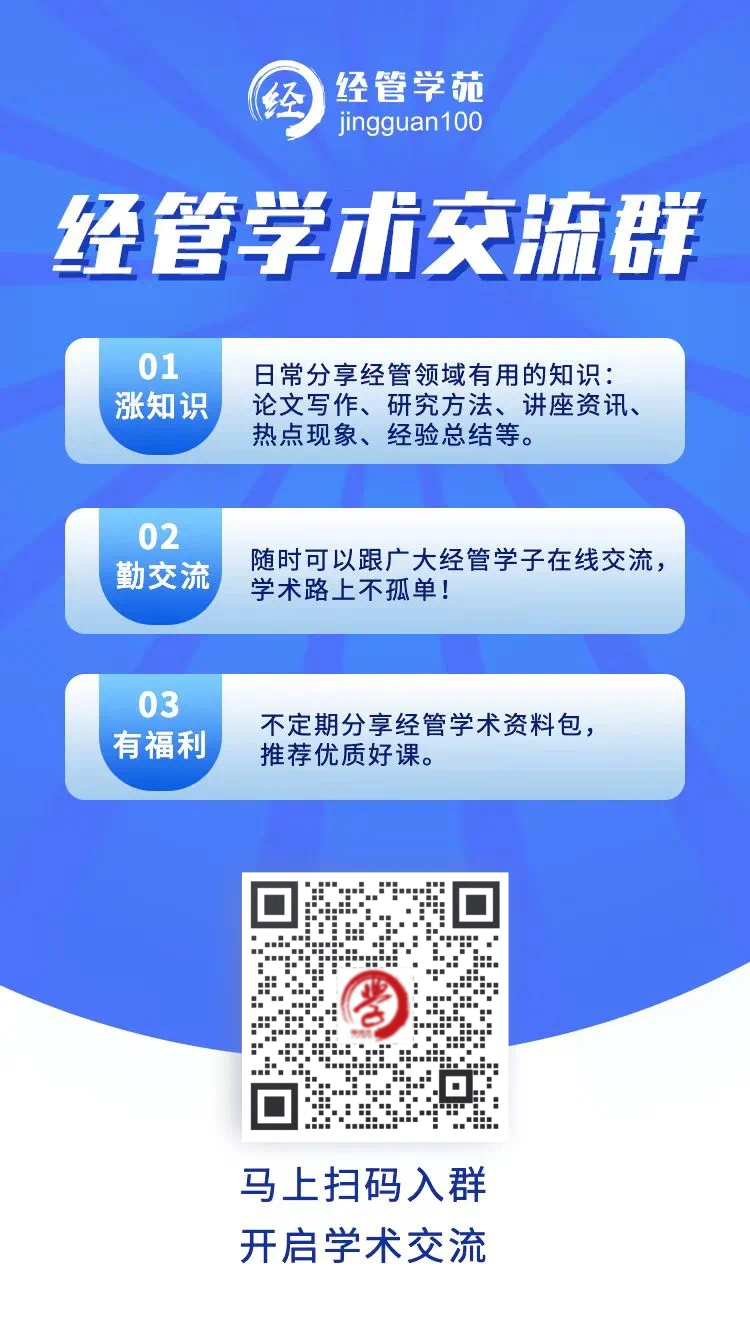 Source: “Dynamic Economics”2025, Issue 2Applications of Industrial Robots, Skill Disparities, and Income Inequality
Source: “Dynamic Economics”2025, Issue 2Applications of Industrial Robots, Skill Disparities, and Income Inequality
—— A Perspective Based on Urban-Rural Dual Structure
Cheng Shixiong Chen Yufei
With the rapid rise of the intelligent technology revolution globally, intelligent manufacturing equipment represented by industrial robots is gradually being widely used by enterprises, which inevitably affects the employment and income of workers. This article theoretically interprets the impact mechanism of industrial robot applications on income inequality based on the urban-rural dual structure, utilizing a database that matches global industrial robot data, Chinese income survey data, and urban-level data to further explore the impact effect of industrial robot applications on income inequality. The research results indicate that the application of industrial robots reduces urban-rural income inequality. Mechanistically, industrial robots reduce urban-rural income inequality by suppressing the advancement of skill structure and narrowing skill premiums. Heterogeneity analysis shows that the convergence effect of industrial robots on income inequality is greater in cities with lower levels of development, lower marketization, lower human capital, and lower research investment.
1. Background and Significance of the Topic
Currently, China is at a critical period of declining demographic dividends and industrial transformation and upgrading, where economic growth needs to rely on improving labor productivity. However, it is noteworthy that the rapid development of automation technology, while improving production efficiency, has a significant impact on the labor market and is an important cause of income inequality. Since the beginning of the 21st century, the Gini coefficient of income disparity among Chinese residents has shown a trend of first increasing and then decreasing. The new technology has led to a transition from the traditional industrial economy era to the emerging digital economy era. In the context of Industry 4.0 and industrial intelligence, how China meets the challenges of a new round of technological revolution, aligns with the development laws of labor transformation, releases technological dividends to offset the contraction of demographic dividends, increases residents’ income, and addresses income inequality has become extremely important.
Maintaining a certain proportion of manufacturing in the national economy is an effective measure to promote the new development pattern of dual circulation. Intelligent manufacturing can effectively enhance the resilience of the industrial chain and supply chain, while industrial robots, which incorporate a large number of artificial intelligence technologies, are hailed as the “pearl at the crown of manufacturing.” Under the current situation and policy promotion, China’s robot industry has rapidly grown in scale, making China the world’s largest application country for industrial robots for nine consecutive years. So, from the perspective of the urban-rural dual structure in China, what impact does the widespread use of industrial robots have on the employment income of urban and rural workers? In the context of skill disparities in the urban-rural labor force, how does this impact differ? Analyzing these issues helps us predict the potential employment shocks and income inequality effects caused by the application of industrial robots, thereby proposing policy recommendations to curb the widening of income inequality.
Currently, a considerable number of scholars have studied the “machine-replacing-human” effect produced by the application of industrial robots, mostly analyzing it from the perspective of substituting low-skilled labor and complementing high-skilled labor. However, as a form of intelligent technology distinct from traditional technologies, the widespread application of industrial robots can significantly enhance individual capabilities, exhibiting both “skill bias” and “task bias.” Additionally, rural laborers, constrained by education levels and skill accumulation, are mostly concentrated in low-skilled positions, while urban laborers have a higher proportion in high-skilled positions. This urban-rural disparity in skill distribution may lead to asymmetric effects of industrial robot applications on income distribution. Existing research mainly focuses on the direct impact of industrial robot applications on employment and wages of laborers in manufacturing enterprises, with little analysis on the income impact effects and mechanisms for laborers in urban-rural sectors and other industries. Therefore, in the context of the rapid development of industrial robots, analyzing the impact mechanism of industrial robots on income inequality and the role of skill disparities is of significant theoretical and practical importance. Through the above analysis, this article, in the context of labor migration between urban and rural areas in China, applies the theory of biased technological progress, considering a two-level CES production function model for analysis. At the same time, based on urban-level data and micro-survey data, it empirically tests the income inequality effects caused by industrial robots and discusses the possible mechanisms of industrial robots’ impact on income inequality.
In summary, the marginal contributions of this article are reflected in the following aspects: First, in terms of theoretical analysis, existing literature mostly discusses the impact of automation, industrial robots, and artificial intelligence applications on labor market employment and macroeconomic growth; a small number of scholars study the impact of artificial intelligence on income inequality, deducing through models that the application of artificial intelligence will expand income inequality between high and low-tech sectors, necessitating government intervention in income distribution. Some scholars have empirically explored the impact of industrial robot applications on enterprise income distribution using different micro data, but none have deeply analyzed the impact of industrial robot applications on income inequality, let alone decomposing the impact effects on urban-rural income inequality. Second, in terms of empirical research, this article utilizes a database combining IFR industrial robot data, economic data at the city level in China, and Chinese income survey data (CHIP), which is nationally representative for studying the impact of industrial robot applications on residents’ income inequality, effectively compensating for the shortcomings of existing literature’s data. The combination of city and individual data allows for a more scientific and detailed assessment of the impact effects of the development of artificial intelligence technologies such as industrial robots on residents’ employment income, which has certain theoretical and practical significance for policy formulation and scientific planning.
2. Main Findings of the Research
Artificial intelligence is becoming the core driving force of China’s economic development, and industrial robots, as an important manifestation of artificial intelligence, promote the deep integration of technological innovation and industrial innovation at an unprecedented speed, enhancing enterprise output. On the other hand, the widespread application of robots has led to unemployment for some groups, and skill mismatches have become significant obstacles to developing new productive forces. This article, from the perspective of urban-rural labor migration, explains the impact mechanism of industrial robots on income inequality based on laborers’ skill disparities, employing a combination of micro and macro data to empirically analyze the impact of industrial robots on income inequality. The main conclusions of the study are as follows: First, industrial robots significantly reduce urban-rural income inequality levels, and this conclusion is robust based on instrumental variable methods. Second, the deepening application of industrial robots can reduce urban-rural income inequality by suppressing the advancement of skill structure and narrowing skill premiums. Third, the impact of industrial robots on urban-rural income inequality exhibits regional differences, with a greater convergence effect on income inequality in cities with lower levels of development, lower marketization, lower human capital, and lower research investment. Fourth, the application of industrial robots can significantly promote the advancement of industrial structure but does not favor the improvement of population agglomeration levels, with no significant impact on industrial clustering.
3. Policy Implications
This article reveals the mechanism by which industrial robots reduce urban-rural income inequality through restructuring skill demands and industrial structures, confirming that technological applications can become a new driving force for alleviating developmental imbalances. Based on China’s reality and the conclusions of this study, the following policy implications are proposed:
First, improve employment support and social security efforts. Although industrial robots have reduced urban-rural income inequality, they have lowered residents’ wage levels, especially affecting urban residents significantly. The possible reason is that industrial robots mostly replace the income of people engaged in routine occupations in urban areas, while rural laborers, limited by education and capabilities, may engage in physical labor, but the impact on unconventional laborers in cultural and entertainment sectors is minimal. However, whether urban or rural laborers, those who become unemployed due to robot impacts will likely find it difficult to secure employment for a period, necessitating the government to further improve the social security system, raise the minimum social security level, and enhance unemployment insurance coverage to avoid social instability caused by shocks.
Second, strengthen education and training and leverage skill advantages. The labor market is impacted by industrial robots, affecting the employment of talents with different skills. The application of robots differs from traditional technology in its “skill bias,” exhibiting a stronger “task bias” characteristic. Governments at all levels should proactively plan and lead the establishment of a comprehensive training mechanism for employment of talents with different skills, ensuring stable employment for low-skilled laborers while also focusing on high-skilled talents mastering high-tech skills, leveraging the advantages of both high and low-skilled talents, and encouraging engagement in unconventional occupations. Strengthening the deepening of the industry-university-research linkage mechanism and building a technology innovation supply chain platform will facilitate the development of new productive forces.
Finally, share technological dividends and promote urban-rural integration. To share the dividends of technology and systems, it is essential to ensure the employment and income of migrant workers, enhancing protections for flexible employment personnel. This can be achieved by cultivating upstream and downstream industrial chains related to industrial robots, fully leveraging the role of “artificial intelligence +” to create new job opportunities, enabling laborers displaced by industrial robots to achieve re-employment. Furthermore, to maximize the positive impact of industrial robots on urban-rural income inequality, it is crucial to be wary of the “digital divide” potentially exacerbating regional disparities. The government should ensure that the dividends of development in the intelligent era benefit the populace through institutional innovation. Further promoting a unified national labor market, breaking down institutional barriers to population mobility, and facilitating urban-rural integrated development will contribute to achieving the goal of common prosperity.
Author InformationCheng Shixiong, Chen Yufei (Corresponding Author), School of Business, Hubei University, Postal Code: 430062, Email: [email protected], [email protected].The full text can be found in the “Latest Directory” section of the Dynamic Economics website, or click on the WeChat page “Read the Original”.


Management and Economics Forum
Hot topics in management and economicsIn-depth analysis of phenomenaSharing valuable experiencesAnalysis of university majorsProviding quality content for studentsWelcome to follow!
Come on, click to see!